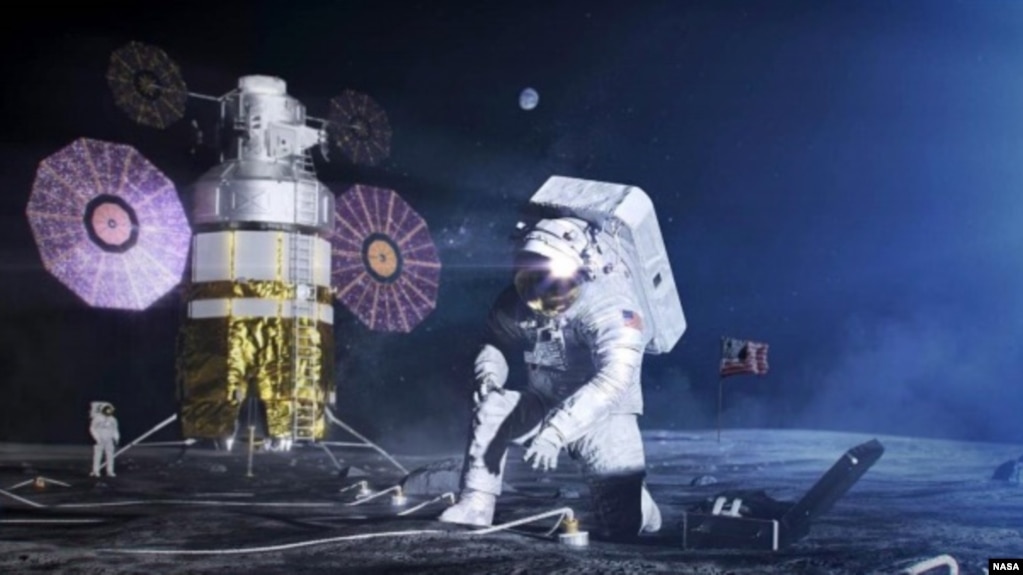
This artist concept shows an image of an early Artemis expedition on the lunar surface. (NASA)
The American space agency, NASA, has released its latest plan to place the first humans on the moon since 1972. The updated information on the Artemis mission renews NASA’s promise that one of the astronauts will be a woman.
“We’re going back to the moon for scientific discovery, economic benefits, and inspiration for a new generation of explorers,” NASA Administrator Jim Bridenstine said in a statement Monday.
NASA’s moon mission is part of its Artemis plan. It will use NASA’s newest rocket, the Space Launch System, or SLS. The astronauts are to travel on NASA’s Orion spaceship.
Bridenstine told reporters that “political risks” have often threatened NASA’s work, especially before such a critical election. If Congress approves $3.2 billion in financing by December 25, he said “we’re still on track for a 2024 moon landing.”
Three projects are competing to build a moon lander that will transport two astronauts to the moon from the Orion spaceship The competitors are all private companies Blue Origin, SpaceX and Dynetics.
Artemis 1 will send a spaceship around the moon in 2021. It will not use a human crew. Artemis II is to send astronauts around the moon in 2023. Artemis III will land on the lunar surface in 2024 and remain for a week. NASA plans to have the astronauts leave the lander to collect soil and rock, search for water and other resources and carry out experiments.
NASA says the plan will cost $28 billion dollars over a period of five years.
I’m Caty Weaver.
Words in This Story
benefits –n. (pl.) results that are good or helpful
inspiration –n. an action or statement that causes someone to want to take action
mission – n. a task or effort that is given to people often from a commanding official such as in the military
Comprehension Quiz
When will Artemis 1 send a spaceship around the moon?